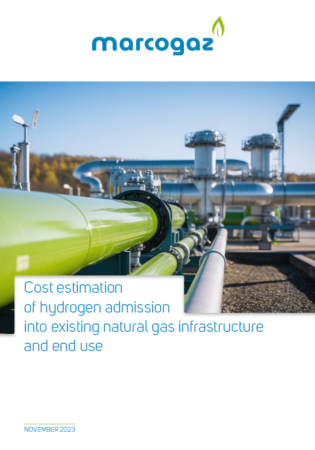Cost estimation of hydrogen admission into existing natural gas infrastructure and end use
17 November 2023
In order to achieve climate neutrality in Europe by 2050, the use of renewable gases, and especially hydrogen (H2) in the gas industry is becoming a necessity. In the transition towards a net-zero energy system, many aspects need to be considered to find the most sustainable, economic, and implementable way of achieving this goal. MARCOGAZ investigated some of those opportunities by bringing more clarity to the actual status of the European midstream and downstream gas infrastructure and end use regarding its H2 suitability. The study aimed at, on one hand, estimating the level of H2 acceptance in the existing natural gas infrastructure and end use, and, on the other hand, estimating the related costs of H2 admission into existing natural gas infrastructure or end use equipment in Europe.
To conduct the study, data was collected throughout European gas operators and stakeholders. Data processing was performed by distinguishing five sectors of the industry, namely, transmission, distribution, underground storage facilities, pressure regulation and metering stations and end use (residential and commercial). Among these five sectors, natural gas – hydrogen (NG-H2) mixtures of H2 concentration were considered, notably 2, 5, 10, 15, 20, 25, 30 and 100 vol.-% H2. Industrial installations and comparison between various types of technologies concerning aspects like energy efficiency and energy availability were disregarded in this study.
The first step was to quantify the asset volumes utilized in the respective category. Next, these assets were evaluated regarding their NG-H2 mixture suitability for the key H2 concentrations. From the H2 suitability assessment, mitigation measures were identified along with their specific costs in order to allow for the safe operation of H2 mixtures. In the final step, the costs were aggregated to determine the total costs for H2 admission into existing natural gas infrastructure and end use.
The result of the study on estimating the level of H2 acceptance in the existing natural gas infrastructure and end use are depicted in an infographic, showing the extent to which natural gas system assets can cope with H2 blending.


